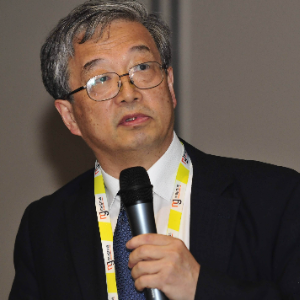Title : SOD1- linked familial ALS with marked intrafamilial phenotypic variation. How do clinical features relate to pathology?
Abstract:
Objective: Familial ALS with a mutation in the superoxide dismutase (SOD1) gene often shows marked intrafamilial phenotypic variation, although its pathologic background remains to be investigated.
Methods: Immunohistochemical studies were performed on postmortem brain and spinal cord from three patients (two brothers and a son) with C111Y mutation in SOD1 gene. The patients came from a family in which the rate of progression of the illness varied markedly over three generations. Two of them (father and son) presented with an ALS phenotype and both died at age 53, 1.2 and 4 years after the onset. One patient with a spinal muscular atrophy (SMA) phenotype died at age of 89 more than 50 years after the onset of his disease. Patients with an ALS phenotype died of respiratory failure without using mechanical ventilation, and the patient with SMA died of aspiration pneumonia.
Results: Pathologically, severe loss of lower motor neurons associated with marked gliosis was evident in the patient with an ALS phenotype with the shortest disease duration. In the other patient with ALS phenotype with more slowly progressive disease, the spinal anterior horn neurons were better preserved and were associated with the appearance of massive intracellular cytoplasmic neuronal inclusions and reactive astrocytes. In the patient with SMA phenotype, the loss of lower motor neurons was equivocal histologically, althoughneuronal loss was quantitatively demonstrable in the cervical segments where the symptoms began. There was no evidence of active neuronal degeneration or reactive gliosis. The posterior column was involved in only one patient with an ALS phenotype. Immunohistochemistry using an antibody against SOD1 oligomers revealed an accumulation of SOD1 aggregates in the motor neurons in all patients, although there were very few in the patient with SMA. Insoluble SOD1 aggregates could be detected by Western blot analysis of the spinal cord tissue sample from one patient with an ALS phenotype but not from the patient with an SMA phenotype. In one patient with ALS phenotype with longer survival, phosphorylated α-synuclein was often found co-localized with SOD1 in the lower motor neurons. All of the intracytoplasmic aggregates were TDP-43 negative.
Discussion: Our data clearly show significant pathologic difference among three patients from a single family despite the presence of identical SOD1 mutation. Phenotypic variability in SOD1-linked ALS may not only be genetically determined, but may also reflect the difference in the rate of disease progression which may reflect acquired factors or post-translational modification. Clinicopathological significance of co-aggregation of α-synuclein with SOD1 protein is unclear but may play an important role in producing phenotypic diversity.
Audience take away:
• understand occurrence of phenotypic variability in SOD1-linke ALS in a family with the same genetic mutation, and
• gain insight on the role of insoluble SOD1 aggregates in the formation of pathologic lesions, and
• may direct attention to the yet-to-be elucidated mechanism(s) of acquired factors which may prevent developing lesions in SOD1-linked ALS.




